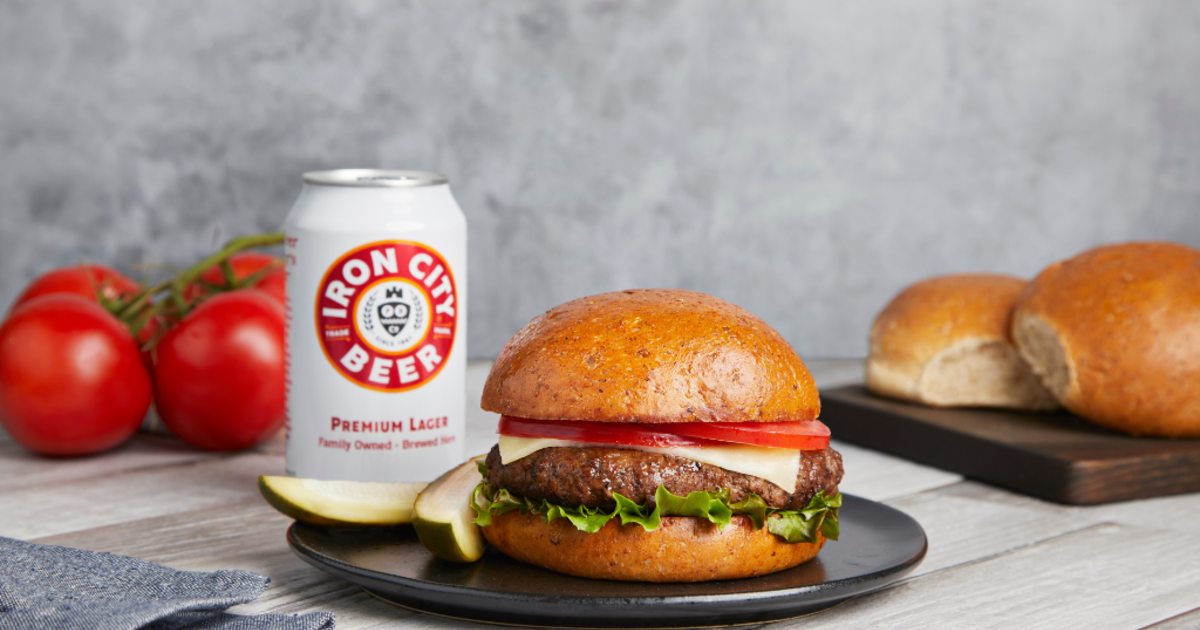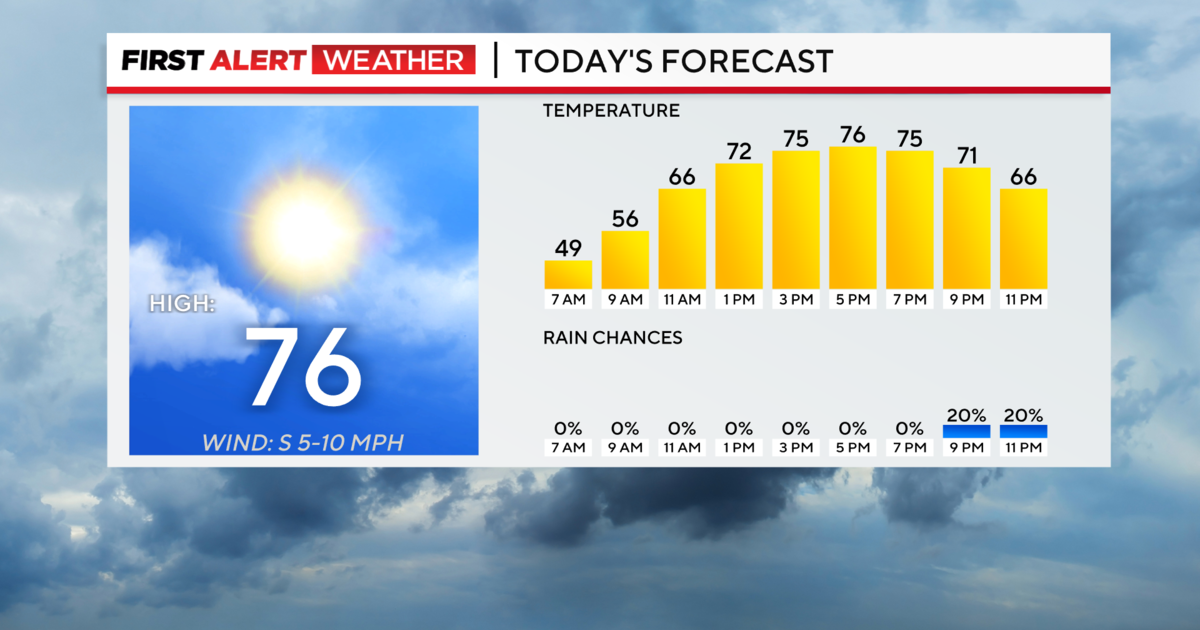Rania's Recipes: Simple Applesauce, Apple Relish
Rania Harris stopped by Pittsburgh Today Live to show off some tips and techniques for the boiling water canning process.
Simple Applesauce
From CookCanCSA.com by Sara Kreidle
Yield: about 5 pint jars
Ingredients:
- 6 pounds apples (use a mix of your favorite varieties)
- 1 ½ cups water
- ½ cup sugar (optional)
- 2 cinnamon sticks (optional)
Instructions:
If this is your first time canning, please read the General Canning Preparation and Processing Instructions page. Prepare your boiling water bath in your Krona 20 quart stock pot fitted with a wire rack, as well as five pint jars, lids and rings.
Rinse, peel, core and chop the apples. In a large pot, combine chopped apples and water. Cover pot and bring to a simmer, stirring occasionally, for about 15 minutes or until apples are soft.
Uncover pot. For a chunky apple sauce, use the back of a wooden spoon to break up any large chunks of apples. For a smooth applesauce, transfer cooked apples to the Norpro 3-Quart Sauce Master and puree the apples, and then return the pureed apples to the pot. Add sugar and/or cinnamon sticks to the applesauce, if using, and stir to combine. Simmer applesauce uncovered, stirring often to prevent sticking, for 5 minutes. Remove and discard cinnamon sticks.
Fill hot jars with hot applesauce, leaving ½ inch of headspace. Wipe jar rims, place lids and rings on the jars, and process jars in the boiling water bath for 20 minutes at a rolling boil with the lid on the canning pot (if you are above 1,000 feet in altitude, adjust your processing time accordingly). When processing time is up, remove the jars from the boiling water bath and place on a towel on the counter to cool. Do not disturb jars while they cool. As the jars cool, you may hear a pinging or popping sound – this is the sound of the lids sealing. After jars have cooled completely, test the seals by pushing down on the center of the lid; it should not flex. If any of the jars failed to seal, simply place them in the refrigerator and use within a week or two. Label the lid of your sealed jars with the contents and date. Properly processed and sealed jars are suitable for shelf storage and should be used within 1 year.
Apple Relish
From CookCanCSA.com by Sara Kreidler
Yield: about 4 pint jars
Ingredients:
- 4 pounds apples
- Ball Fruit-Fresh (optional)
- 1¼ cups cider vinegar (5% acidity)
- ½ cup sugar
- ½ cup honey (preferably mild and light colored)
- 2/3 cup water
- ¼ teaspoon ground cloves
- 1 teaspoon ground cinnamon
- ½ teaspoon ground ginger
Instructions:
If this is your first time canning, please read the General Canning Preparation and Processing Instructions page. Prepare your boiling water bath in your Krona 20 quart stock pot fitted with a wire rack, as well as four pint jars, lids and rings.
Rinse, peel, core and thinly slice the apples. Optional: you may treat the sliced apples with Ball Fruit-Fresh (or another brand of ascorbic acid) to prevent the apples from browning.
In a large pot, combine the vinegar, sugar, honey, water, cloves, cinnamon and ginger and bring syrup mixture to a boil. Add the apples to the pot with the syrup mixture and mix well to combine. Simmer apple relish for 3 minutes, stirring often.
Pack the hot apple relish into hot jars, leaving ½ inch headspace and making sure that the apples are completely covered by the syrup. Wipe jar rims, place lids and rings on the jars, and process jars in the boiling water bath for 10 minutes at a rolling boil with the lid on the canning pot (if you are above 1,000 feet in altitude, adjust your processing time accordingly). When processing time is up, remove the jars from the boiling water bath and place on a towel on the counter to cool. Do not disturb jars while they cool. As the jars cool, you may hear a pinging or popping sound – this is the sound of the lids sealing. After jars have cooled completely, test the seals by pushing down on the center of the lid; it should not flex. If any of the jars failed to seal, simply place them in the refrigerator and use within a week or two. Label the lid of your sealed jars with the contents and date. Properly processed and sealed jars are suitable for shelf storage and should be used within 1 year.
General Canning Preparation and Processing Instructions
From CookCanCSA.com by Sara Kreidler
Preparation:
1. Start with a clean work area (counters, stove, sink) and clean kitchen tools (knives, cutting boards, bowls, pots, spoons, measuring cups, etc.) and clean hands.
2. Wash the jars and rinse thoroughly.
3. Prep your canning station. I like to lay out the following items before I start preparing my recipe:
• Old, clean kitchen towels and hot pads on the counter to prevent scorching and staining the counter top;
• Canning tools, such as a jar lifter, wide mouth funnel, ladle, bubble remover and lid wand;
• Clean canning jars and rings, and new (never reused) canning lids; and
• A clean, damp paper towel.
4. Place clean jars inside a boiling water bath canning pot (such as the Krona 20 quart stock pot) fitted with a wire rack. Fill the pot with water so that all of the jars are full, submerged and covered by 1 inch of water, and cover the pot with a lid. Put the pot on your largest burner and bring the water to a boil.
5. Place new (never reused) lids in a small pot, fill with water, cover pot with a lid and bring to a simmer over medium flame.
6. While the canning pot is coming to a boil, prepare your fruits or vegetables for canning according to the recipe. For your safety, be sure to follow a recipe from a current, reliable source that follows the USDA's standards for safe canning techniques and processing times.
7. Using your jar lifter, remove a jar from the canning pot and pour the water from the jar into the sink. Place the empty jar on top of the towels at your canning station. Repeat with the remaining jars, pouring the excess water from half of the jars into the sink and pouring the water from the remaining jars back into the canning pot. The canning pot should be about half-full of hot water when all of the jars are removed and emptied. Return lid to canning pot and allow water to return to a boil.
Processing:
1. Using your wide mouth funnel and a ladle, fill the hot jars with your product as directed in the recipe, being sure to remove air bubbles (if needed) and leaving the amount of headspace specified by the recipe.
2. Wipe the rim of the jar with the damp paper towel. Use the lid wand to remove 1 lid from the pot and place it on top of the jar. Screw the ring onto the jar until it is finger-tip tight (you don't want it to be too tight or the air won't be able to escape during processing). Repeat with each jar until all of the jars are full.
3. Using your jar lifter, return the filled jars to the boiling water bath canning pot. The water should cover the jars by at least 1 inch. Place the lid on the canning pot and process at a full boil for the length of time specified in your recipe (adjusting for altitude, if applicable).
4. When the processing time is up, use your jar lifter to remove the jars from the canning pot and place on a towel on the counter. Do not disturb the jars while they cool. As the jars cool, you may hear a pinging or popping sound – this is the sound of the lids sealing.
5. Approximately 12 hours after processing, remove the rings from the jars and test the seals by (1) pushing down on the center -- it should not flex, and (2) gently lifting the jar by the sealed lid – it should not come unsealed. If any of the jars failed to seal, simply place them in the refrigerator and use within a week or two. Wash and dry the rings and store until you need to use them again. Storing jars with the rings off is recommended because the lid is designed to alert you to spoilage in the jar by the center popping up and the seal becoming loose, and removing the rings prior to storage ensures that the lid will be able to pop up/dislodge if there is spoilage.
6. Use a clean, wet wash rag to wipe down the sealed jars. Sometimes there will be residual food on the outside of the jar (especially where the rings were), and this can cause scum or mold to form on the outside of the jar if it is not wiped off.
7. Use a permanent marker to label the lids of your sealed jars with the contents of the jar and the date. Store jars in a cool, dry, dark place for up to 1 year.



